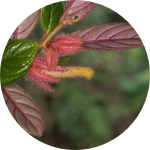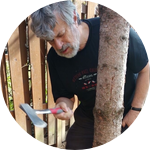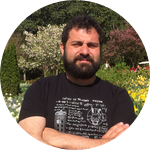About This Project
The African violet, Saintpaulia, is one of the most popular houseplants, with retail sales of horticultural hybrids amounting to tens of millions of dollars per year. At the same time, natural populations are threatened on the mountains of Kenya and Tanzania because of agriculture and climate change. A Saintpaulia genome sequence would provide vital data for breeding of color and shape modifications, better understanding African violet evolution, and informing strategies for their conservation.
Ask the Scientists
Join The DiscussionWhat is the context of this research?
The cultivated African violet is the basis for a multi-million dollar industry producing hundreds of varieties. Yet, wild African violets are paradoxically among the most critically endangered plants of the Eastern Arc Mountains in East Africa, which are among the most important areas for global conservation of biodiversity. Human activities have caused severe, local habitat degradation, and >70% of the original forest cover has been destroyed. As a flagship species for conservation of the Eastern Arc Mountains flora and fauna and the foundation of a significant horticultural industry with thousands of enthusiastic growers and breeders, sequencing the African violet genome will provide multiple resources for follow-up research on natural populations and horticultural varieties.
What is the significance of this project?
With the advent of DNA sequencing technologies, increasing numbers of sequenced plant genomes are providing crucial insights into a multitude of features, including genome structure, genetic underpinnings of adaptive traits and horticultural traits, and evolutionary history. Sequencing the African violet genome will provide resources for genetic mapping of traits used in breeding cultivated varieties, not only of African violets but also their close relatives Streptocarpus and Sinningia, other popular tropical houseplants. Sequencing the genome will also identify DNA variants that can be used to estimate patterns of genetic diversity, gene flow, and population sizes among wild species. This information is important for developing conservation strategies and priorities.
What are the goals of the project?
This project is the first phase in sequencing the African violet genome. Based on shotgun sequencing on the Illumina HiSeq platform, this first phase will produce about 150-times coverage of the African violet genome. These data will provide an important basis to explore features and organization of its genome as well as information about genetic variation and evolutionary history. In the next phases of this project, we will generate a complete, high-quality, annotated and assembled genome that can serve as a reference for future sequencing and genotyping of more species, natural populations, and cultivated varieties.
Budget
This first stage of the African Violet Genome Project will explore the basic features of its genome, including its true size in DNA base pairs, approximate numbers and identities of genes, and content of so-called "junk" DNA. This first foray into sequencing should yield about 150-times coverage of its nuclear genome, which will be more than enough to address our first questions, provide an opportunity for a first publication, and establish the feasibility of more in-depth research on natural populations and horticultural varieties.
Endorsed by
Meet the Team
Affiliates
Team Bio
Victor A. Albert
I am a plant evolutionary genomicist with special interest in genome adaptive landscapes, the evolution of genome size, and the evolutionary roles of small-scale gene duplications. My genome projects have included the carnivorous bladderwort plant (Utricularia), the basal angiosperm Amborella, avocado, birch, and diploid coffee. In addition to my work on plant genomics, I have a long history of research in phylogenetic systematics of flowering plants, and on the molecular basis for plant morphological development (evo-devo). Together with project collaborator Prof. Charlotte Lindqvist, I published two papers on the phylogeny, biogeography and conservation of African violet species, in 1999 and 2001. I am a graduate of Brown University (BA and MS, 1987 and 1989) and the University of North Carolina - Chapel Hill (PhD, 1992).
Aureliano Bombarely
I am a genobotanist seduced by the colorful diversity of plant phenotypes. My research is focused on the study of plant domestication and evolution using genomic approaches such as whole genome sequencing, reduced representation genotyping, RNA-seq and ChIP-Seq. I have been involved in several plant genome sequencing projects such as tomato, watermelon and Nicotiana benthamiana. Currently I am using floral crops from the 18th century such as begonias, florist’s gloxinias and petunias as models to study the link between genomic and phenotypic changes during the plant domestication process. I graduated from the University of Malaga, Spain, in 2001. I obtained my PhD degree from the same university in 2007 studying the ripening process in strawberries. Then I moved to Ithaca, NY, for a first postdoc in the Sol Genomic Network database at the Boyce Thompson Institute (from 2008 to 2012; Bioinformatics in Solanaceae), and a second one in the Department of Plant Biology at Cornell University (from 2012 to 2014; Systematics in Polyploids). I am currently a Translational Genomics Assistant Professor in the Department of Horticulture at Virginia Tech.
Charlotte Lindqvist
I am an evolutionary biologist with interests and expertise in genetic research on the speciation process. My research has included many different systems over the years, from African violets to Hawaiian plants, and among animals, from polar bears to walruses. In every case, my research has been focused on the genetic basis for how species evolve, and most particularly on the effects of hybridization in this process. My work on bear genomes, for example, has demonstrated that polar, brown, and black bears reproductively intermingled at different points in their evolutionary histories, likely sharing genetic variants that could have been put to adaptive use in the genomes of recipient species. My studies of the native Hawaiian members of the mint family, Lamiaceae, have similarly shown that interspecies gene transfer has contributed to the process of diversification in that magnificently variable plant lineage. I received my PhD from the University of Copenhagen in Denmark - working on African violet molecular systematics - and thereafter I performed postdoctoral research at the University of Oslo in Norway. I have been an Assistant Professor at the University at Buffalo since 2010, where I recently received notice of pending promotion to Associate Professor.
Jarkko Salojärvi
I am originally an engineer who somewhere along his studies got fascinated by the complexity of biology. I have long experience of analyzing big data from different sources, and I see biology as the field which gives the biggest challenge and also greatest opportunity to further our understanding of the world. My research is so-called data-driven science, where data is analyzed as it is, without any prior hypotheses. It has been intriguing to see how the patterns of evolution and adaptation stand out when analyzing genomic data. My biggest research project so far has been the silver birch genome, but I have expertise also from microbial ecology.
I have an MSc in engineering physics from Helsinki University of Technology and defended my DSc thesis in information sciences (machine learning) at Aalto University in 2008. Since then I have been doing bioinformatics at University of Helsinki.
Additional Information
Links to two of our scientific papers on the evolution of African violets!
Project Backers
- 14Backers
- 7%Funded
- $626Total Donations
- $44.71Average Donation









